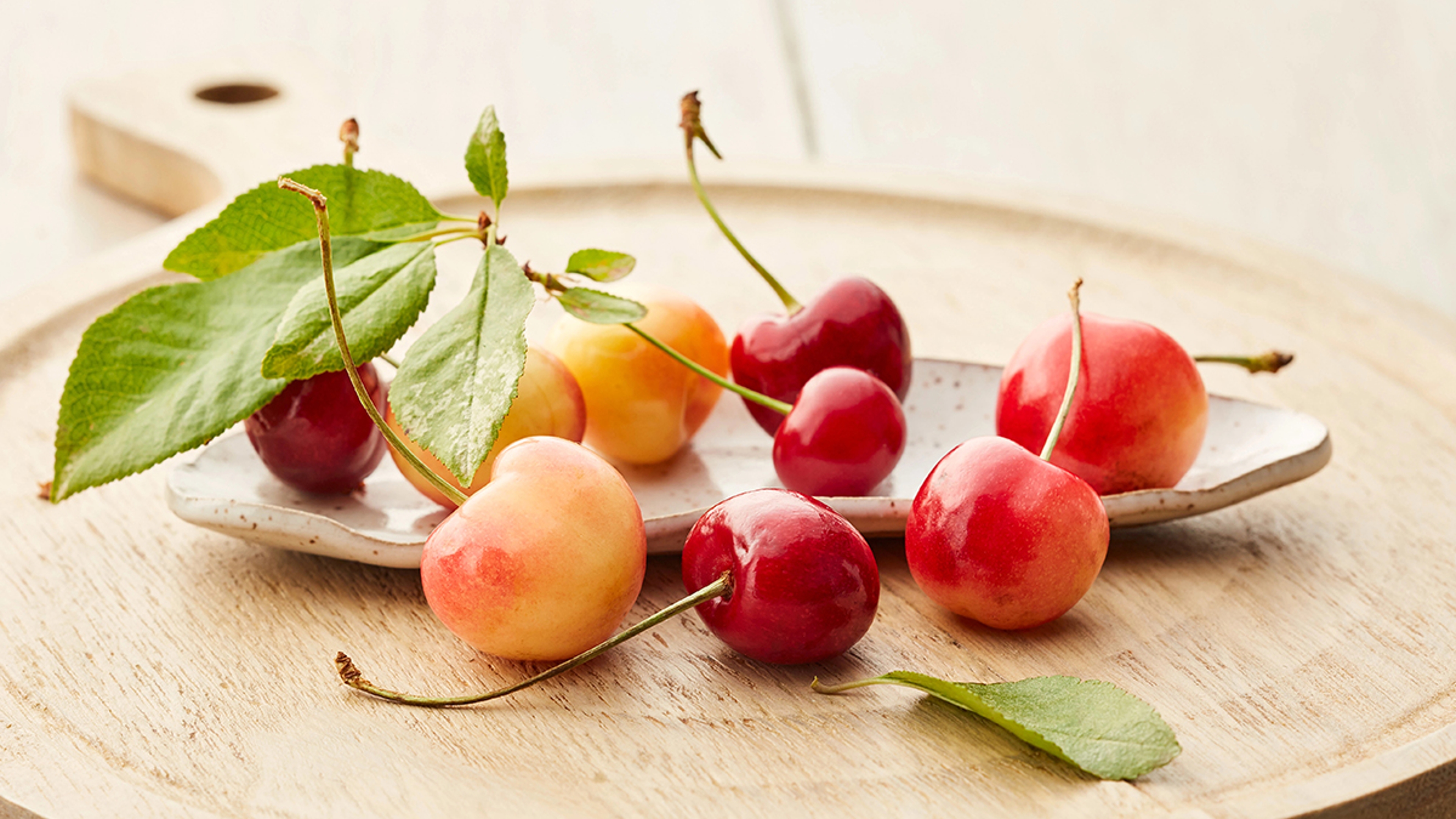10 Things You Didn't Know About Peaches
Find out how this juicy stone fruit started a war, why it has fuzz on it, and the origins of peach cobbler.
Jul 31, 2021
1. The peach is a nutritional powerhouse
While some fruits are celebrated for having high levels of a single nutrient such as vitamin C (we're looking at you, oranges), peaches are arguably one of the most nutritious fruits overall. “Peaches are an excellent source of a very wide range of vitamins, minerals, fiber, and antioxidants," says Vandana Sheth, a registered dietitian, nutritionist, and author. This includes copious amounts of vitamins A, C, E, K, B1, B2, B3, B6, beta-carotene, and folate, as well as minerals such as calcium, potassium, magnesium, phosphorus, and zinc.
2. A peach by any other name...
The peach originated in China and has been cultivated since at least 1000 B.C. It gradually moved to Persia, where it was discovered by Alexander the Great, who in turn brought peach trees home with him to Greece. The scientific name for the peach, Prunus persica, literally means “Persian plum," and the Romans called the peach a “Persian apple." The French translated that name to “pêche," which ultimately led to the English name for the peach today.
3. They're the perfect farm-to-table food
Thousands of varieties of peaches are grown and sold in the United States, and no one type is dominant in the marketplace today, according to Jerome Frecon, a professor emeritus of agriculture at Rutgers University and spokesperson for the New Jersey Peach Promotion Council. Fresh peaches are typically labeled as either white-fleshed or yellow-fleshed when sold, Frecon says, but dozens of different varieties could reside under the same label, such as Oregold®, since most varieties of peach trees have adapted to the regions where they grow. “The varieties of peaches grown in Florida are not the varieties grown in New Jersey or California, for example," Frecon explains.
4. A happy face can blush like a peach

When people first began cultivating their own peach trees in Europe centuries ago, it was common to share abundant crops with family and neighbors who didn't have them. According to many linguists, receiving this generous gift, combined with the happy, rosy glow people get on their cheeks when they eat the tasty fruit, led to the expression of feeling “peachy" or “peachy keen." And the person giving away the fruit? They earned a nickname too — a “real peach."
5. Their 'fuzz' is a defense mechanism
The distinct fluff on a peach is designed to do more than just tickle you. It's there to help protect the fruit from anything that might weaken the tree on which it grows, Frecon says. This includes insects, animals, diseases, and even blight and blemishes from sun exposure or bad weather.
6. Don't like fuzz on your fruit?
Try a nectarine instead. While many people think of nectarines as a different fruit altogether, they're actually just fuzz-free peaches.

7. Peaches are a creative inspiration
From music to sports to literature to painting, peaches pop up in all areas of art and culture. Pop megastar Justin Bieber has a hit called “Peaches," and 25 years ago, the alternative band The Presidents of the United States of America ruled MTV also with a song called “Peaches." And who can forget The Stranglers' rendition in 1977? In the 1960s, children's author Roald Dahl wrote the classic tale James and the Giant Peach, which was later made into a movie musical. As for sports, legendary baseball player Ty Cobb was nicknamed “The Georgia Peach." And classic painters, including Renoir, Monet, and Van Gogh, have all painted iconic still lifes that prominently feature the peach.
8. They're ripe with meaning
In China, the peach is a symbol of good luck, protection, and longevity; in fact, some Chinese brides decorate their hair with peach flowers for their wedding ceremonies. In Korea, the peach is considered a source of “good energy" that can help to drive away evil spirits. And in Hungary, peaches are considered a symbol of calmness and are believed to contain a natural sedative that can help to relieve stress and anxiety and promote high-quality sleep.
9. A single peach once started a war
In September 1655, a Dutch immigrant living in a settlement called New Sweden (near Wilmington, Delaware) killed a woman who was picking peaches in his orchard. The woman was a member of a Native American tribe called the Susquehannocks, and they were rightly outraged by her murder. They retaliated against New Sweden, attacking the settlement and taking 150 people hostage. The prisoners were later released through negotiation. The legacy of what happened that day only grew in the years that followed, with many experts calling it one of history's greatest “single day" wars — an event we now refer to as The Peach Tree War.
10. They inspired a classic New World dessert
Peach pies have been a favorite of Dutch and English immigrants for centuries, but in the early 1800s, when settlers began to trek across the American West toward California and Oregon, baking was impossible. Instead, travelers had to make do with what they had, and that meant using whatever fresh produce they could pack with them and fruits and vegetables they found along the way. These trail chefs then “cobbled" their meals together. One popular favorite: diced fresh fruit, especially peaches, dumped into the bottom of a Dutch oven, topped with globs of biscuit dough, and baked over the nightly campfire — the origin of the now beloved peach cobbler.
.svg?q=70&width=384&auto=webp)







